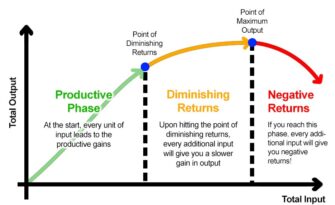Solicitation Volume and Overhead Ratios
Most relationships are messy and involved. This applies to two people as much as it applies to two data points. The relationship is rarely linear and always up and to the right. Underneath those two data points are a myriad of other data points and beneath them, human beings such as donors and those working for charities.
Perhaps it isn’t surprising then that your overhead ratio and your solicitation volume have a shared relationship with success; growth and revenue respectively. That relationship forms a shape, an upside down U: ∩. It’s not a perfect upside down ∩ and the slope going up and down will differ as will the apex. But the maxim holds in every case; more is more right up until it reaches the point that it’s less.
To put a fine point on it,
- More spend on overhead increases organizational growth and program outcomes right up until the point that it decreases growth and program outcomes.
- Sending out more solicitations will increase revenue right up until the point that it decreases revenue.

We’ve written extensively about solicitation volume and in a nutshell:
- More volume increases irritation.
- That irritation is widespread.
- As irritation goes up, likelihood to respond in the immediate and future goes down
- The solicitation gets all the credit for the incremental revenue produced from appeal X but receives none of the blame for attrition. In the extreme, those proportions, 100% and 0%, are actually more accurate if reversed.
A recent study looked at overhead ratios for US nonprofits between 2008 and 2018. A huge dataset. They found:
- Growth and program outcomes increase as overhead increases –but only to a point.
- After the tipping point, increasing overhead is bad, not good.
- In their analysis this tipping point was around 35%.
There is nothing magic in 35%. Don’t take it literally as it will differ on a variety of factors. But, here are key takeaways:
- Your overhead ratio is probably too low.
- But, you can increase the credibility of your argument to increase overhead by acknowledging there is a tipping point.
- Humans are humans and diminishing returns are inevitable.
- In this case, inefficiency and sloth are real but that they exist on the downhill side of your upside down ∩ doesn’t minimize the starvation cycle argument, which is real on the uphill side of that ∩.
Kevin



Kevin, please share more information about the recent study that concluded a 35% tipping point.
Echoing Shannon’s request. Thanks for this post, Kevin. The conversation regarding overhead is most certainly a persistent one in the industry. Appreciate your top-level takeaways here and would also love to check out the original research that is referenced.